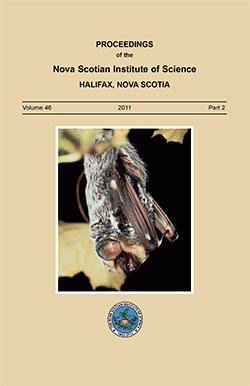LATE BLOOMING OF PLANTS FROM NORTHERN NOVA SCOTIA: RESPONSES TO A MILD FALL AND WINTER
DOI:
https://doi.org/10.15273/pnsis.v46i2.4058Abstract
Over 1400 flowering records of 135 species were recorded from over 125visits to more than 20 sites in Antigonish County, Nova Scotia from November
2005 to January 2006, when the growing season is normally over. The species
identified were primarily herbaceous dicots; however, there were four species
of woody plants (Cornus sericea, Spiraea latifolia, Symphoricarpos albus
and Salix sp.) and one monocot (Allium schoenoprasum). The number of
species flowering declined linearly as fall progressed, as did the amount
of flowering for each species. Nevertheless, over 40 species were still in
flower in early December, and over 20 species flowered in January. The
final flowering date was 21 January, when ten species were found. This
work builds on a previous study in 2001, when 93 species were recorded
in flower during November-December. In addition to the 30% increase in
recorded species in 2005, almost 50% of the species found in 2005 were
not recorded in 2001. This study provides an expanded baseline against
which changes in flowering phenology can be evaluated with respect to
subsequent regional climate change.
Key Words: Antigonish, flowering, Nova Scotia, phenology, climate change


